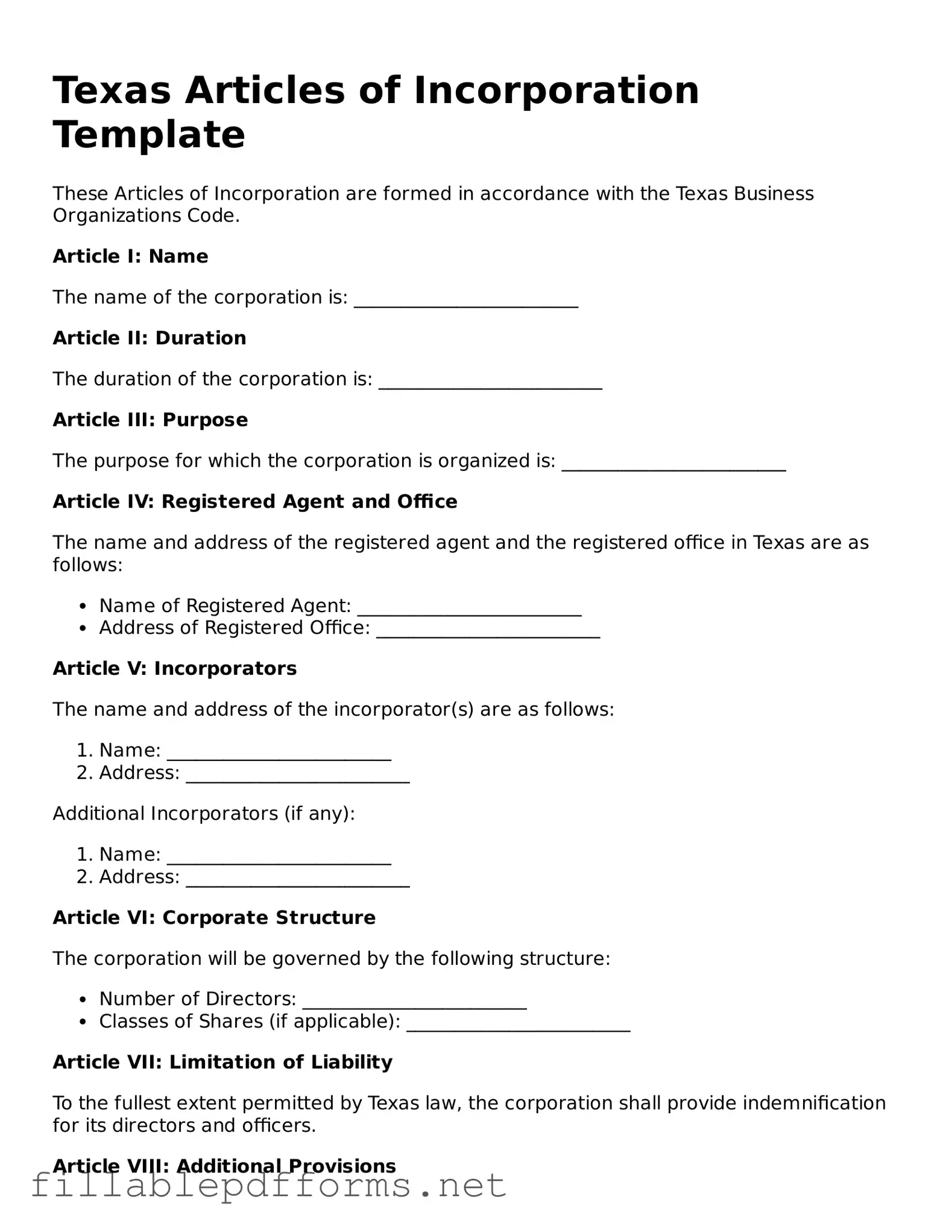In the vibrant landscape of Texas business formation, the Articles of Incorporation form serves as a crucial foundation for establishing a corporation. This essential document outlines key elements that define the corporation's identity, including its name, purpose, and the address of its registered office. Within this form, individuals must also designate the initial board of directors, who will steer the corporation's strategic direction. Moreover, it provides an opportunity to specify the type of stock the corporation is authorized to issue, which is vital for attracting investors and facilitating growth. By detailing the corporation's structure and governance, the Articles of Incorporation not only comply with state requirements but also lay the groundwork for future operations. Understanding the nuances of this form is essential for anyone looking to navigate the complexities of corporate formation in Texas, ensuring a smooth and compliant start to their business journey.
